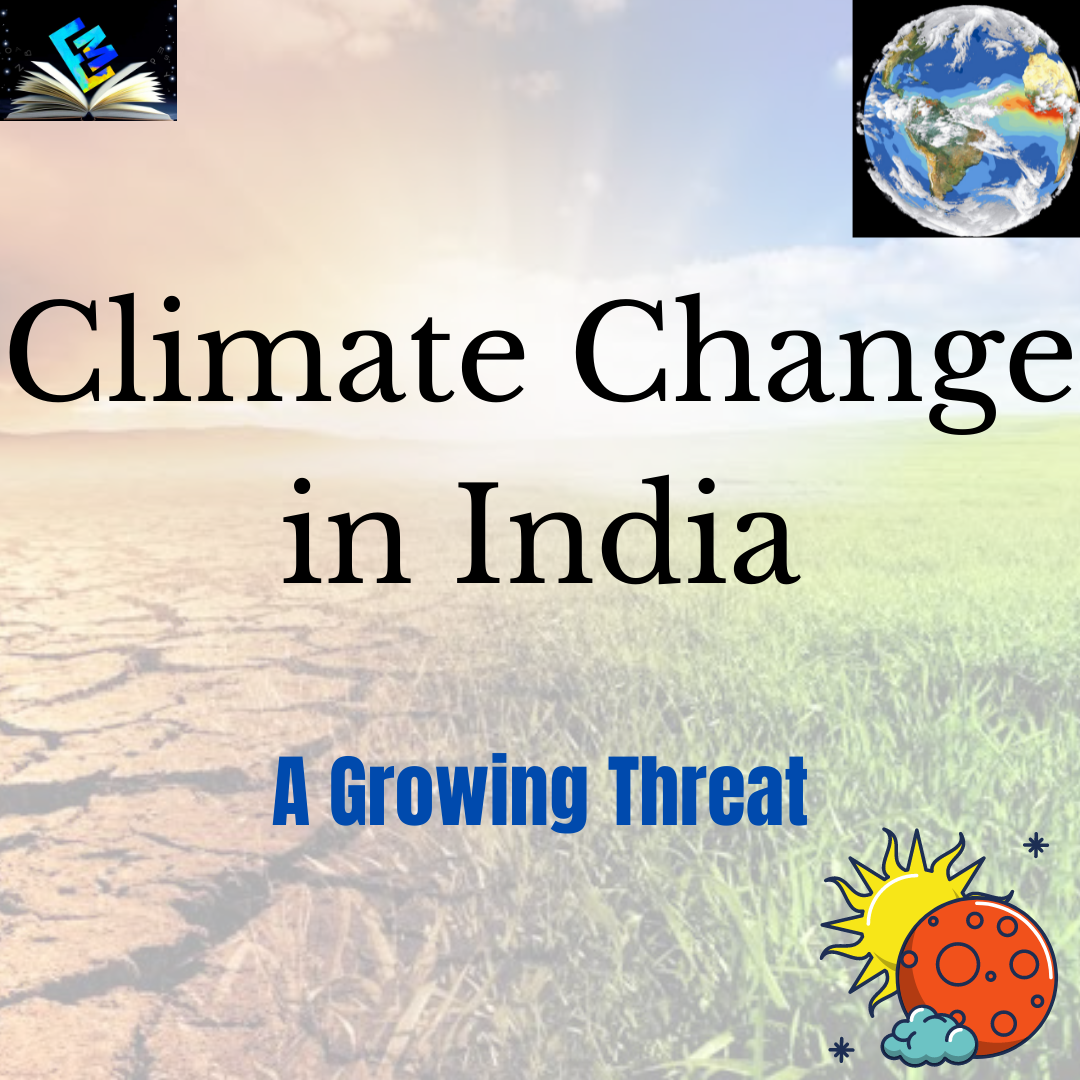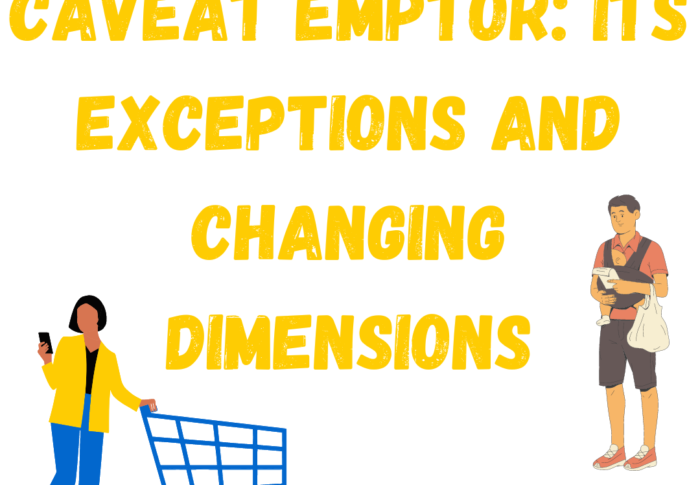
Climate Change in India – Growing Threat to India
AUTHOR : SREEJITA KARMAKAR
Introduction
Climate refers to the long-term regional or global average of temperature, humidity, and rainfall patterns over seasons, years, or decades. Climate change is the worldwide phenomenon of climate transformation characterized by the changes in the usual climate of the planet (regarding temperature, precipitation, and wind) that are especially caused by human activities. As a consequence of these imbalances in the weather of Earth, the sustainability of the planet’s ecosystems is threatened, as well as the future of humankind and the stability of the global economy.
Causes of Climate Changes
Changes can be seen in Earth’s climate since the early 20th century. These are primarily driven by human activities or are man made, particularly fossil fuel burning, which increases heat-trapping greenhouse gas levels in Earth’s atmosphere – leading to an increase in Earth’s average surface temperature. These human-produced temperature increases are usually referred to as global warming. Natural processes can also lead to climate change, including internal variability (e.g., cyclical ocean patterns like El Niño, La Niña, and the Pacific Decadal Oscillation) and external forcings (e.g., volcanic activity, changes in the Sun’s energy output, variations in Earth’s orbit).
Climate Change in India
The impacts of climate change have started reaching India. Heatwaves are becoming more common and severe; heavy rain events have increased threefold since 1950, and the rising sea levels are posing new threats as one-third of India’s population live along the coast. People with low income and other marginalized groups are most vulnerable to these hazards.
The economic cost of climate change in India is massive. In 2020, Cyclone Amphan affected 13 million people and resulted in damage of over $13 billion after causing landfall. A study suggests that declining agricultural productivity and rising cereal prices could lead to an increase in India’s national poverty rate by 3.5% by 2040 compared to a zero-warming scenario; which equates to around 50 million more poor people that year.
The Indian monsoon is generally erratic or irregular in its arrival and retreat, but it is likely to be posing more dangerous threats in the future and will be getting wetter because of global warming altering the system, new research suggests. It will not only damage the economy but will also affect agricultural practices. Greenhouse-gas-induced warming has played an immense role in making monsoon seasons more volatile. India has almost always witnessed a change in monsoon patterns over the years as climate disruptions take a toll on the system in the subcontinent.
Recently, there came in the news of 2.15 lakh trees to be chopped down for the Buxwaha diamond mine in Chhatarpur, Madhya Pradesh and more than a lakh people came forward from across the country, including Madhya Pradesh to save the trees. In the face of COVID-19, these people have started the save Buxwaha Forest campaign on social media, but as soon as the COVID-19 situation is brought under control, the people will reach Buxwaha and if necessary, they will stick to the trees. The diamonds are worth crores of rupees, which is why the felling of trees was being planned. Meanwhile, Neha Singh of Delhi has filed a petition in the apex court which has been cleared by the apex court to hear it. These tough times of COVID-19 have shown some the need for oxygen to survive. And it is only for the good of the world as a whole if the plans of this indiscriminate feeling are cancelled.
India’s first-ever climate change assessment report has revealed that the country’s average temperature is expected to rise by 4.4 degrees Celsius by the end of the year 2100. The report warned that such rapid changes in the temperature would lead to increased stress on India’s natural ecosystems, agricultural output, and freshwater resources, which means a serious impact on biodiversity, food, water and energy security, and public health. The report called for research and strategies towards improving resilience in Indian cities and advocated for protecting the country’s forests and urban green spaces.
Already, India’s average temperature has risen by around 0.7 degrees Celsius during the 1901- 2018 period due to greenhouse gas emissions. The report also said that several regions in India are global biodiversity hotspots with numerous endemic species of plants and animals and with the “climate changing more rapidly than the usual pace of evolutionary adaptability of many species, they may face increasing threats on account of these changes.”
Measures to be Taken to Check Climate Change
1) Recycle More: The aim is to cut down the amount of carbon dioxide released into the environment. By recycling half the waste produced at home, one can save up to 2000 pounds of CO₂ every year.
2) Plant Trees: Deforestation plays a major role in global warming and climatic changes. Planting trees is helpful as they absorb carbon dioxide from the atmosphere and regulate the climate.
3) Switch to Renewable Energy: One of the most effective ways to prevent global warming is to start using renewable energy sources such as solar, geothermal, tidal and wind energy, and biomass while eliminating the use of fossil fuels.
4) Use Energy-Efficient Devices: By investing in energy-efficient devices such as bulbs, LED lights, or solar-powered shower systems, one can reduce energy consumption and help in the production of clean energy.
5) Save Water: By making sure to turn off taps while brushing, going for shorter showers, and so on, one can take steps towards reducing carbon dioxide emission and preventing global warming, thus, preserving the planet for future generations.
Conclusion
Thus to sum it up, India is standing face-to-face with a severe climate change, threatening to turn the balance of the ecosystem of India. To avoid the drastic effects of such climate change, the people of India have to come together and take certain necessary steps to stop air, water, and soil pollution, the people have to stop the indiscriminate felling of trees and follow such other steps towards sustainable development. Together we can make the world a better place for us and future generations.
Bibliography
- https://youmatter.world/en/definition/climate-change-meaning-definition-causes-and-consequences/
- https://climate.nasa.gov/resources/global-warming-vs-climate-change/
- https://odi.org/en/publications/the-costs-of-climate-change-in-india-a-review-of-the-climate-related-risks-facing-india-and-their-economic-and-social-costs/
- https://english.newstracklive.com/news/madhya-pradesh-chattarpur-buxwaha-jungle-contain-diamond-mc23-nu764-ta325-1161051-1.html
- https://www.downtoearth.org.in/news/climate-change/climate-change-may-make-indian-monsoons-more-volatile-wet-years-ahead-study-76504
- https://www.indiatoday.in/science/story/climate-change-to-worsen-indian-monsoon-unleash-dangerous-rains-1811927-2021-06-07
- https://india.mongabay.com/2020/06/protect-indias-forests-and-urban-green-spaces-says-indias-climate-change-report/
FOR MORE INFORMATION VISIT OUR SITE






